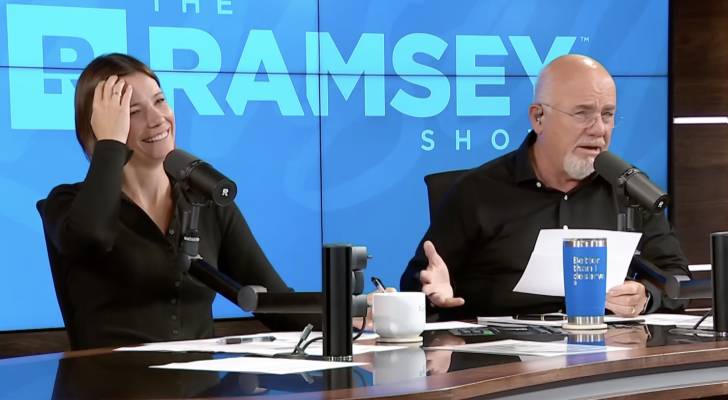Here’s the income you need to be in the top 1%, 5%, and 10% in America — and 3 crucial tips to help you climb higher on the wealth ladder in 2025


We adhere to strict standards of editorial integrity to help you make decisions with confidence. Some or all links contained within this article are paid links. When you think of the top 1% of American earners, the first people who might come to mind are likely well-known investors and entrepreneurs like Warren Buffett and Bill […]
‘I feel like an idiot’: Dallas woman says she’s divorcing her husband of 27 years after discovering he secretly racked up $1M in debt — but Ramsey Show hosts say she needs to own her part


We adhere to strict standards of editorial integrity to help you make decisions with confidence. Some or all links contained within this article are paid links. When you enter into a marriage, you expect your spouse to be faithful. But sometimes, a different type of infidelity — financial — can rear its ugly head. That’s […]
This is the true value of having a fully paid-off home in America — especially when you’re heading into retirement


We adhere to strict standards of editorial integrity to help you make decisions with confidence. Some or all links contained within this article are paid links. There’s great news for America’s homeowners: A growing percentage now own their homes outright. No mortgage, no liens. U.S. Census Bureau data showed that in 2024, about 38.8% of […]
‘I can make it any number I want’: Florida gas stations are charging customers $1 more a gallon for using credit cards — and it’s completely legal. Here’s how drivers can protect themselves
We adhere to strict standards of editorial integrity to help you make decisions with confidence. Some or all links contained within this article are paid links. Credit cards have long been a popular and convenient way to pay for most things — including filling up at the gas station — and there are benefits to […]
‘We wanted to escape’: This Texas couple ditched the big city to build their dream home for $60,000 out of two 40-foot shipping containers — and they claim you can do it, too


We adhere to strict standards of editorial integrity to help you make decisions with confidence. Some or all links contained within this article are paid links. Lexi Newkirk and her husband, Diego, weren’t interested in cramped city living. Instead, the young married couple from Austin, Texas, created their very own path to home ownership. “We […]
Warren Buffett says the ‘best business to own’ can do this 1 special thing over an extended period of time — here are 3 prime examples in his current portfolio to build your own riches


We adhere to strict standards of editorial integrity to help you make decisions with confidence. Some or all links contained within this article are paid links. Investing is a notoriously noisy industry, but Warren Buffett has always managed to cut through the clutter with his simple yet powerful advice. One of Buffett’s most overlooked nuggets […]
My mom passed away and I was shocked to learn she left me 10 times as much money as I expected in her will. It’s a nice problem to have, but I’m a little lost on how to handle all this cash
We adhere to strict standards of editorial integrity to help you make decisions with confidence. Some or all links contained within this article are paid links. In the next 20 years, Americans will inherit an estimated $72 trillion as boomers pass down their accumulated wealth to younger generations in a phenomenon dubbed the Great Wealth […]
Super-rich Americans like Mark Zuckerberg and Jay-Z have taken out mortgages for homes they can easily afford — here’s why


We adhere to strict standards of editorial integrity to help you make decisions with confidence. Some or all links contained within this article are paid links. For many people, the only way to afford a home is to finance it with a mortgage and pay off that loan over time. During the first quarter of […]
Home insurance in America might double very soon — and not just in ‘disaster’ cities. Why rates are skyrocketing across the US and how to protect yourself now
We adhere to strict standards of editorial integrity to help you make decisions with confidence. Some or all links contained within this article are paid links. Home insurance used to be an afterthought, but these days it’s a rapidly escalating expense that is believed to be “deepening the housing crisis,” according to the Consumer Federation […]
‘Son, roll up your sleeves’: Dave Ramsey lays into ‘entitled’ man for questioning why to even invest if he might not live to enjoy his riches — but Ramsey says his mindset is the real problem


We adhere to strict standards of editorial integrity to help you make decisions with confidence. Some or all links contained within this article are paid links. Sometimes you can get the best advice by poking the bear. One write-in guest on The Ramsey Show found out the hard way after trying to “make sense” of […]
